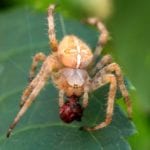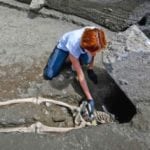 Weird Stuff
Weird Stuff  Weird Stuff
Weird Stuff  Politics
Politics 10 Political Scandals That Sent Crowds Into the Streets
 Weird Stuff
Weird Stuff Ten Bizarre Facts About The Doge Meme
 Our World
Our World 10 Ways Your Christmas Tree Is More Lit Than You Think
 Movies and TV
Movies and TV The 10 Coolest Stars to Set Sail on The Love Boat
 History
History 10 Things You Didn’t Know About the American National Anthem
 Technology
Technology Top 10 Everyday Tech Buzzwords That Hide a Darker Past
 Humans
Humans 10 Everyday Human Behaviors That Are Actually Survival Instincts
 Animals
Animals 10 Animals That Humiliated and Harmed Historical Leaders
 History
History 10 Most Influential Protests in Modern History
 Weird Stuff
Weird Stuff 10 Funny Ways That Researchers Overthink Christmas
 Politics
Politics 10 Political Scandals That Sent Crowds Into the Streets
 Weird Stuff
Weird Stuff Ten Bizarre Facts About The Doge Meme
Who's Behind Listverse?

Jamie Frater
Head Editor
Jamie founded Listverse due to an insatiable desire to share fascinating, obscure, and bizarre facts. He has been a guest speaker on numerous national radio and television stations and is a five time published author.
More About Us Our World
Our World 10 Ways Your Christmas Tree Is More Lit Than You Think
 Movies and TV
Movies and TV The 10 Coolest Stars to Set Sail on The Love Boat
 History
History 10 Things You Didn’t Know About the American National Anthem
 Technology
Technology Top 10 Everyday Tech Buzzwords That Hide a Darker Past
 Humans
Humans 10 Everyday Human Behaviors That Are Actually Survival Instincts
 Animals
Animals 10 Animals That Humiliated and Harmed Historical Leaders
 History
History 10 Most Influential Protests in Modern History
10 Strange Earthly Mysteries That We Finally Understand
Every day, the planet confronts us with puzzles both big and small. The answers to some of these mysteries can save lives, but more often than not, the least critical secrets turn out to be the most interesting ones.
10How Alligators Move Silently Through Water
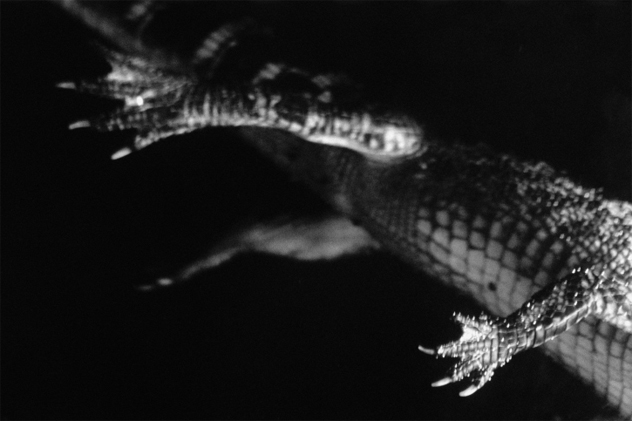
With hardly a ripple to give them away, alligators move gracefully through the water whether they’re diving, surfacing, or rolling around. But they don’t have flippers or fins like fish or other aquatic animals, so how do they accomplish their expert maneuvers?
Like airplane pilots, they use controls to adjust their position. However, for an alligator, those controls are special muscles that alter the position of its lungs within its body cavity. The gases in its lungs act like an internal flotation device. By using these muscles, an alligator can shift its lungs toward its tail to dive, toward its head to surface, and toward the appropriate side to roll in the water. Alligators also use their tails to help them roll.
As researcher T.J. Uriona said, “It may be that instead of these muscles arising for breathing, they arose for moving around in the water and later were co-opted for breathing.”
9How Natural Arches Defy Gravity
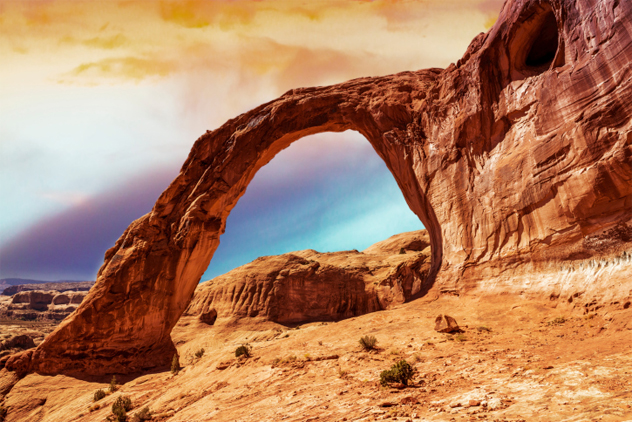
Although natural formations like sandstone arches and alcoves often appear to defy gravity, they actually derive their strength from gravity. As wind and water erode away at the rock, the grains in the lower part of the formation are strengthened by the act of holding more weight from the top. Essentially, the grains of sand interlock from gravity-induced stress.
While some types of sandstone contain cementing minerals, researchers from the Czech Republic found that those minerals don’t have to be present for the sandstone particles to bind. In fact, cementing minerals also erode from wind and water. Regardless of the type of erosion or the presence of cementing minerals, vertical stress appears to be the most important factor in making sandstone more resistant to erosion and creating breathtaking natural sculptures.
To illustrate the concept, researchers used the example of a dry brick wall. “It is easy to pull out brick from the top of the wall, but hard to pull brick from the bottom, as it is loaded,” said geologist Jiri Bruthans. Almost like a human sculptor, nature uses wind and water as tools to eliminate the excess material and reveal the inherent shape in the stone, which is actually created by weight and gravity.
8How Plants Are Protected From Sunburn
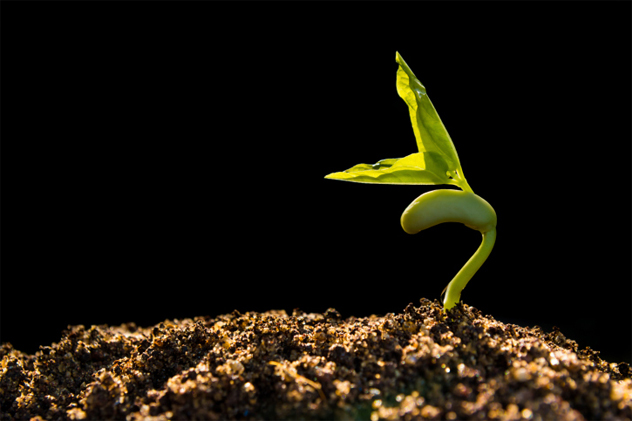
Even though plants need to absorb light from the Sun to make food through photosynthesis, ultraviolet radiation from the Sun can damage a plant’s DNA and stop it from growing. In that way, sunburns are potentially as dangerous for plants as for humans. But plants can’t lather themselves with sunscreen like we can. Instead, they produce special molecules called sinapate esters which are transported to their leaves to prevent ultraviolet-B (UV-B) radiation from penetrating the outer layers and burning the plant.
One particular kind of sinapate ester, sinapoyl malate, absorbs the complete spectrum of UV-B radiation to prevent damage to the plant’s DNA. Although these UV-B wavelengths are the same ones that damage human DNA, researchers don’t intend to add sinapoyl malate to sunblocks for people. They believe that the cinnamates we already use in our sunscreens are just as effective. Instead, scientists believe that this information should be used to develop plants that can withstand the greater radiation levels that may accompany global warming.
7The Vel-Negative Molecule

Most of us know of the eight most common types of blood: A, B, AB, and O, each of which can be negative or positive for the Rhesus D antigen. But in reality, there are millions of varieties of blood. During a blood transfusion, if you receive a type of blood with an antigen that you don’t have, you can have a dangerous, possibly deadly, immune reaction to the infused blood.
In the early 1950s, doctors discovered a rare blood type—Vel-negative—that causes violent rejection of blood transfusions. Approximately 1 in 2,500 people in Europe and North America have it. But it took another 60 years for doctors to find the molecule, a protein called SMIM1, that created the Vel-negative blood type and develop two rapid DNA-based tests to identify it. These tests can be done in just a few hours. “It’s usually a crisis when you need a transfusion,” said Bryan Ballif of the University of Vermont. “For those rare Vel-negative individuals in need of a blood transfusion, this is a potentially life-saving time frame.”
6How To Make The Perfect Popcorn
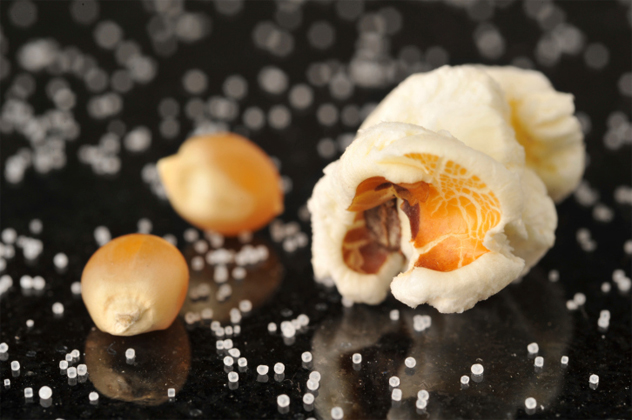
Through high-speed imaging and thermodynamic analysis, scientists decided to explore how popcorn jumps, where its popping sound comes from, and what temperature will produce the most popped kernels. They found that temperature is the crucial factor. When the kernal is heated, the moisture inside the kernel turns into water vapor and expands against the hull, which then fractures into a billowy, white flake.
According to their research, the French scientists found that 180 degrees Celsius (356 °F) is the perfect temperature to pop the most corn. Below that, fewer kernels will pop. When the critical temperature is reached, a leg protrudes from the grain. As the leg heats up, it jumps into the air. But instead of a rocket effect, the kernel performs a maneuver like a running gymnast turning a somersault.
Even though the sudden release of pressurized water vapor doesn’t cause the kernel to jump, it does create the “pop” we hear. The researchers made sure that the sound doesn’t come from the hull fracturing or the flake hitting the plate. Instead, they found that the flake becomes an acoustic resonator when its internal pressure drops, like the pop from a champagne bottle when the cork is removed.
5Why Gorillas Eat Rotting Wood

Gorillas will chew on decaying wood until their gums bleed, in some instances. They may also lick decaying logs and tree stumps, often returning daily to do this. At first, mystified researchers thought the rotting wood acted like medicine to soothe the animals’ stomachs or to kill parasites, but the reason turned out to be even more bizarre.
After watching 15 gorillas in the Bwindi Impenetrable National Park in Uganda eat decaying wood, scientists at Cornell University gathered samples of the wood that the animals had eaten as well as wood that the gorillas had avoided. They gathered other specimens from the gorillas’ diets, too. By analyzing all of these samples, the scientists discovered that the rotting wood provided more than 95 percent of a gorilla’s dietary sodium, although it was only 4 percent of the amount of food eaten.
Some monkeys, chimpanzees, and lemurs have also been observed eating wood. It seems the animals instinctively search for a source of sodium if their bodies need it. “This does not necessarily mean that they ‘know’ that wood is a good source of sodium, but it does mean that they can detect when it is present,” said Alice Pell of Cornell University. The animals may have learned what to eat through trial and error.
4What Caused Iceland’s Troll War Pillars
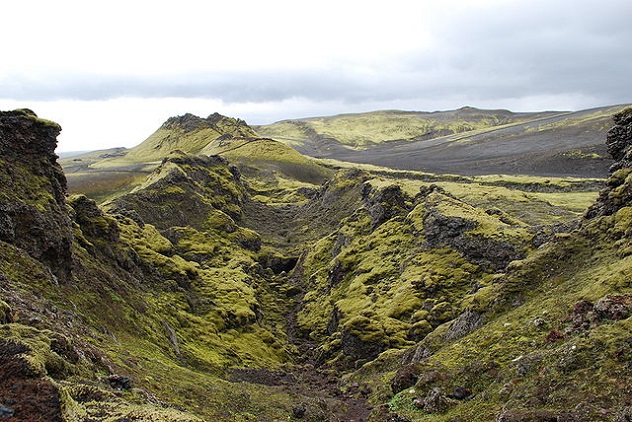
According to local legend, the hollow rock pillars in the Skaelinger Valley in Iceland were formed by angry trolls throwing them at each other. Each of the 40 pillars is a little over 2.4 meters (8 ft) high and 1.5 meters (5 ft) wide.
Although that explanation of these odd-looking formations is amusing, volcanologists from the University at Buffalo found that they probably came from the interaction of water and lava on land long ago. According to the scientists’ theory, lava from the Laki volcanic eruption of 1783 (Laki pictured above) was eventually blocked from going through the Skafta River Gorge, so the molten rock forged through valleys such as the Skaelinger instead. With the ground becoming hot, steam rose like geysers from gaps in the lava. Then, as more lava flowed around those columns of steam, the molten rock eventually cooled to form hollow pillars. The entire process probably took no more than a few days.
“Normally, when we think of lava coming in contact with water, we think of that water flashing to steam and causing an explosion,” said volcanologist Tracy Gregg. “Here’s an example where . . . you could’ve stood right there and watched it.”
3Where Christmas Island Seamounts Came From
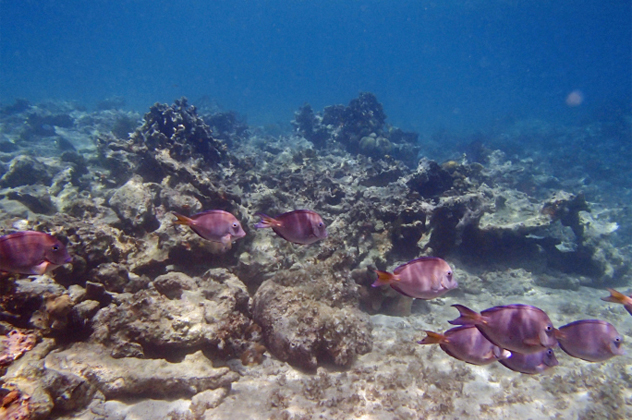
Over 50 massive underwater mountains, or “seamounts,” are scattered through a 1-million-square-kilometer (417,000 mi2) area of the northeastern Indian Ocean called the Christmas Island Seamount Province. Scientists had been baffled by the origin of these seamounts, some of which rise up to 4.5 kilometers (3 mi) high. They weren’t formed by hotspots in the mantle or fractures in the ocean crust, as occurred with seamounts in other parts of the world. Instead, their signatures matched those of northwestern Australian rocks.
From this information and the reconstruction of tectonic plates, geochemists from the University of Kiel discovered that these seamounts formed from rocks that were recycled when Gondwana, an ancient supercontinent, began to split apart to form the Indian Ocean about 150 million years ago. Simultaneously, the bottom of Gondwana’s crust peeled off and became heated when it mixed with the upper mantle. Then it was pulled back to the surface.
“When the [Indian Ocean’s] spreading center passed over that area, it essentially sucked the continental bits and pieces up again,” said geochemist Kaj Hoernle. “Because these pieces have more volatile content (such as water and carbon dioxide), they produced more melted material than the normal upper mantle, and formed seamounts instead of the normal ocean crust.”
2Why We’re Tricked By Body Doubles

Stunt doubles on TV and in movies trick us into believing that we’re seeing our favorite TV or movie star because of a brain mechanism that stabilizes our perception to help us survive. Our minds perceptually “pull” us toward faces we’ve seen within the last 10 seconds; otherwise, people would look entirely different to us every time they moved their heads or the lighting on their faces changed. This would make us “blind” to even the most familiar friends and relatives and result in visual chaos.
However, this same perceptual trick, known as the “continuity field,” also works in reverse to make us mistake two completely different forms or faces as identical. The continuity field morphs faces for us by assuming that recent images haven’t changed that much. Scientists tested this by showing study participants a target image, then another quick series of pictures on a screen. When asked to find a match for the target image, most people didn’t choose a duplicate. Instead, they selected a picture combining the two latest target images. That means that their brains didn’t go for accuracy, but for a mix of the most recent pictures.
The continuity field is critical to stabilizing our vision. “If the world were unstable, things would fluctuate in appearance. We’d have double-takes all the time, and with everything—with cups, with glasses, with our kids,” said psychologist David Whitney. “Imagine how disturbing that would be.”
1Why Guinness Bubbles Sink
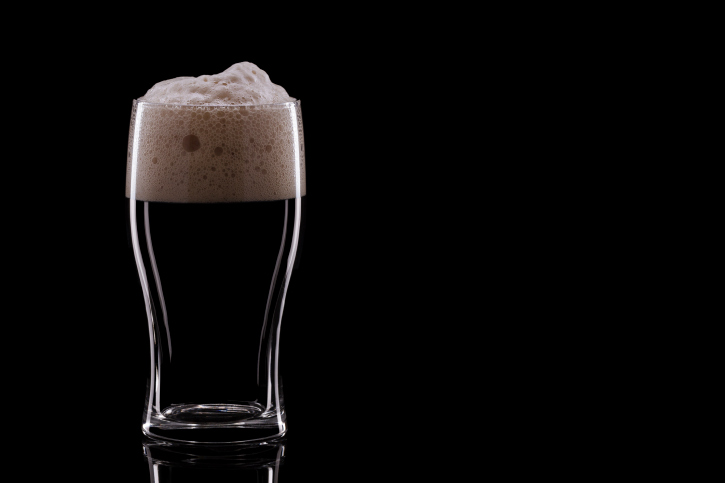
It doesn’t happen every time, but when it does, it makes a great party trick: Sometimes, the bubbles in a glass of Guinness go down when we would expect them to go up. Chemists from Stanford University and the University of Edinburgh decided to find out why. It turns out that the bubbles in the middle of the glass do go up. However, as the liquid circulates from the middle of the glass toward the sides and down again, it pulls the bubbles down with them.
“The answer turns out to be really very simple,” Stanford professor Richard Zare explained. “It’s based on the idea of what goes up has to come down. In this case, the bubbles go up more easily in the center of the beer glass than on the sides because of drag from the walls. As they go up, they raise the beer, and the beer has to spill back, and it does. It runs down the sides of the glass carrying the bubbles—particularly little bubbles—with it, downward. After a while it stops, but it’s really quite dramatic and it’s easy to demonstrate.”
The carbon dioxide in many other beers is more likely to dissolve into the liquid. That’s why many people, including some scientists, thought that the nitrogen in Guinness bubbles or the shape of the glass was the reason that Guinness bubbles go down. However, the Stanford researchers found that it can occur with any liquid in a variety of different glass shapes.





